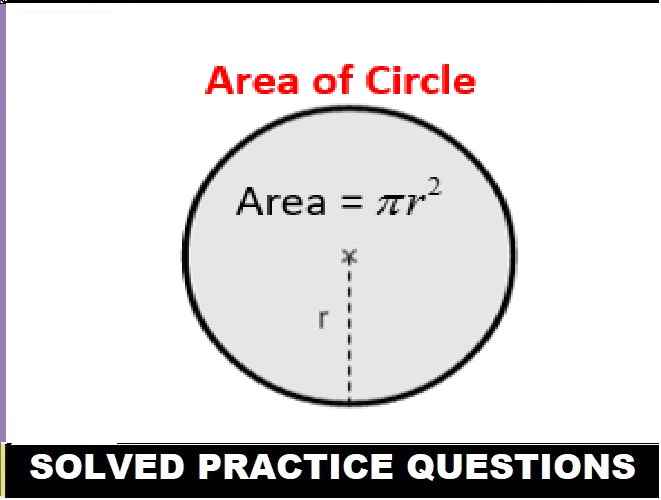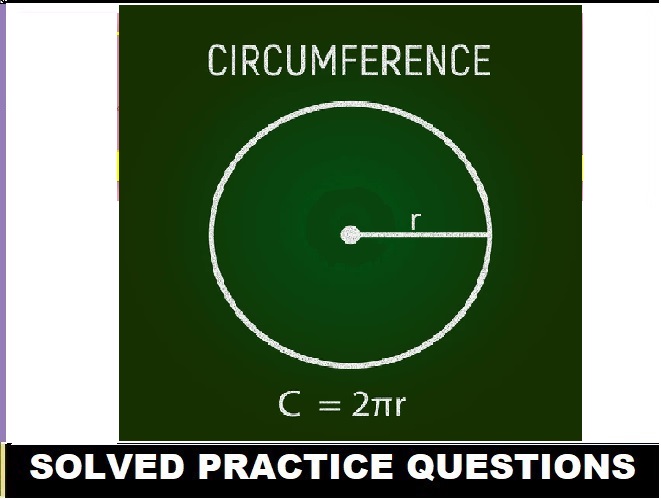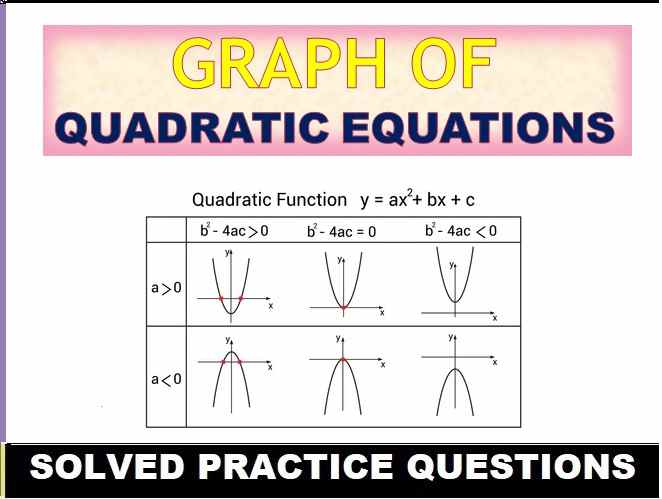Respiratory System Structured Answer Biology Class-9 ICSE Selina Publishers Solutions Chapter-14. Step By Step ICSE Selina Concise Solutions of Chapter-14 Respiratory System with Exercise-14 including MCQs, Very Short Answer Type, Short Answer Type, Long Answer Type and Structured/Application Questions Solved . Visit official Website CISCE for detail information about ICSE Board Class-9.
Respiratory System Exe-14 Structured Answer Biology Class-9 ICSE Concise Selina Publishers
| Board | ICSE |
| Publications | Selina Publication |
| Subject | Biology |
| Class | 9th |
| Chapter-14 | The Respiratory System |
| Book Name | Concise |
| Topics | Solution of E. Structured/Application/Skill Answer Type |
| Academic Session | 2023-2024 |
E. Structured/Application/Skill Type
Respiratory System Class-9 Biology Concise Solutions
Page 157
Question 1.
Given alongside is a diagrammatic sketch of a kind of part in human lungs.
(i) Name the parts numbered 1-4
(ii)What do the arrows 5 and 6 indicate?

Answer:
(i)
1: Thin walls of capillary;
2: RBCs (Red blood corpuscles);
3: Plasma;
4: Thin wall of the alveolus
(ii) 5: CO2 diffuses out; 6: O2 diffuses in
Question 2.
Given below is an overall chemical reaction of a certain process:
![]()
(a) Name the process.
(b) Is this reaction applicable to animals or to plants or to both animals and plants?
(c) Name one tissue in which this reaction occur.
Answer:
(a) Anaerobic respiration
(b) This reaction is applicable to animals only.
(c) This reaction may occur in muscular tissues (skeletal muscles).
Question 3.
Given below are chemical reactions (1 to 5) involving glucose and five other chemical products (A-E).

(a) Write the reaction number of the following:
(i) Anaerobic respiration in plants __________
(ii) End products in aerobic respiration ____________
(iii) Reaction occurring in liver _________
(iv) Anaerobic respiration in animals ________
(v) Storage in the liver _________
(b) Which reactions (1-5) in the above correspond to the following (write the corresponding number of reaction next to them).
(i) Aerobic respiration
(ii) Change taking place in the liver
(iii) Anaerobic respiration in yeast
(iv) Change taking place in a plant
storage organ, e.g., potato
(v) Anaerobic respiration in animals
Answer:
(a)
(i) Anaerobic respiration in plants: 5
(ii) End products in aerobic respiration: 4
(iii) Reaction occurring in liver: 2
(iv) Anaerobic respiration in animals: 1
(v) Storage in the liver: 3
(b)
(i) Aerobic respiration: 4
(ii) Change taking place in the liver: 3
(iii) Anaerobic respiration in yeast: 5
(iv) Change taking place in a plant storage organ, e.g., potato: 2
(v) Anaerobic respiration in animals: 1
E. Structured/Application/Skill Type
Respiratory System Class-9 Biology Concise Solutions
Page 158
Question 4.
The volume of air in the lungs and the rate at which it is exchanged during inspiration and expiration was measured.
The following diagram shows a group of the lung volumes and capacities.
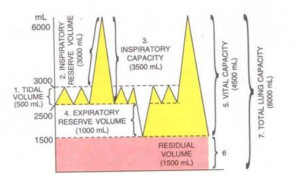
Study the diagram carefully and explain briefly the following :
(a) Tidal volume (TV)
(b) Inspiratory reserve volume (IRV)
(c ) Expiratory reserve volume (ERV)
(d) Vital capacity (VC)
(e) Residual volume (RV)
Answer:
(a) Tidal volume (TV): Air breathed in and out, in a normal quiet breathing is called tidal volume. It is 500 mL.
(b) Inspiratory reserve volume (IRV): Air that can be drawn in forcibly over and above the tidal air is called inspiratory reserve volume. It is also known as complemental air. It is 3000 mL.
(c) Expiratory reserve volume (ERV): Air that can be forcibly expelled out after a normal expiration is called expiratory reserve volume. It is also called supplemental air. It is 1000 mL.
(d) Vital capacity (VC): Volume of air that can be taken in and expelled out by maximum inspiration and expiration is called vital capacity. It is 4500 mL.
(e) Residual volume (RV): Air left in the lungs, even after forcible expiration is called residual volume. It is 1500 mL.
Question 5.
The figure given below represents a certain organ of the human chest cavity. Study the same and answer the following questions.
(a) Identify the organ and the organ system.

(b) Label the guidelines 1 to 6.
(c) What are the two advantages of C-shaped cartilaginous rings found in structure 1 ?
(d) Name the fluid filled between the two protective layers of the organ shown as part 2.
(e) Name the basic structural and functional unit of part 2.
Answer:
(a) The given figure shows respiratory system and lungs.
(b) Labelled guidelines 1 to 6 are :
1 → Trachea
2 → Left lung
3 → Bronchus
4 → Rib cage
5 → Pleural fluid
6 → Diaphragm
(c) Two advantages of C-shaped cartilaginous rings of trachea are:
- Provide strength to trachea.
- Provide flexibility and keep the trachea distended permanently.
(d) Pleural fluid
(e) Alveoli
Question 6.
The figure given alongside shows an experimental set up to demonstrate a process. Answer the following questions.
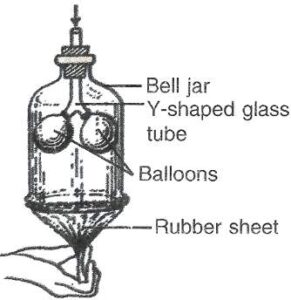
(a) Name the process depicted.
(b) What are the two steps of the above mentioned process?
(c) What do the following parts in the diagram represent ?
(1) Balloons
(2) Rubber sheet
(3) Bell jar
(d) Write the exact location of the organ represented by the balloons in the human body.
Answer:
(a) Breathing.
(b) Inspiration and expiration.
(c) The parts represent:
(1) Lungs
(2) Diaphragm
(3) Chest cavity
(d) In the chest cavity, enclosed within the rib cage.
— : End of The Respiratory System E. Structured/Application/Skill Answer Class-9 ICSE Biology Solutions :–
Return to Return to Concise Selina ICSE Biology Class-9
Thanks
Please share with your friends
